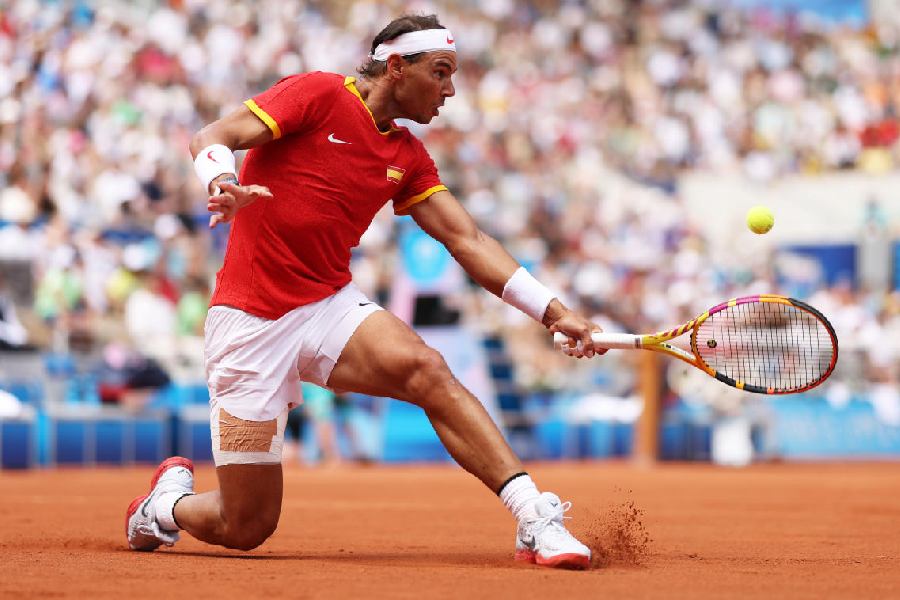“What a career, Rafa! I always hoped this day would never come. Thank you for the unforgettable memories and all your incredible achievements in the game we love. It’s been an absolute honor!” — that’s how Roger Federer, Rafael Nadal’s long-time rival and friend reacted after the Spaniard announced on Thursday that the ongoing season will be his last.
Federer could have been speaking for every Nadal fan and tennis aficionado on the planet. For Nadal, the 22-time grand slam champion, epitomised courage and resilience in a career that spanned more than two decades.
The 38-year-old definitely has the numbers to flaunt but his influence goes far beyond the titles he has won. Having shared a golden era of tennis with Federer and Novak Djokovic, he has been synonymous with determination and an unrelenting spirit that helped him glide through the highs and lows.
When he finally puts his racquet to bed after the Davis Cup finals to be played in the Spanish town of Malaga next month, he will leave behind a legacy that will underscore not only his skill and athleticism, but also his never-say-die spirit.
Compatriot Carlos Alcaraz has often been compared to Nadal and has the unenviable task of living up to that expectation. “It is really difficult news for everybody and even tougher for me. He has been my idol since I start playing tennis. I look up to him... Losing him, in a certain way, is going to be difficult for us, so I will try to enjoy as much as I can when he’s going to play (and) enjoy the time with him as much as I can,” an emotional Alcaraz had said after the news broke.
Born on June 3, 1986, in Manacor, Mallorca, Nadal developed a unique playing style, especially a powerful topspin-laden forehand, under the guidance of Toni Nadal. It is also believed that Uncle Toni encouraged him to play left-handed. Add to that his agility and focus, and you had one of the toughest competitors on court.
Nadal won 14 grand slam titles under Toni’s guidance. It was only when Toni grew tired of the relentless travel that Nadal brought in former world No.1 Carlos Moya as his chief coach in 2016.
Extremely close to his family, the encouragement of his parents Ana Maria Parera and Sebastián also gave the young Nadal the grounding that stood him well in his more mature years.
Listing his many achievements may seem almost unnecessary to prove Nadal’s class and the dominance that the Big Three had on the sport in the past two decades. But it was almost prophetic when he won his first grand slam, at the French Open, in 2005 just a few days after he had turned 19. This was also the same tournament where Nadal defeated Federer for the first time in a major, in the semi-final.
Nadal went on to make Roland Garros his own, winning the singles crown 14 times, when no other player in the Open Era has won more than six French Open titles. Even if he had not won anywhere else, this feat in itself would have been enough to consider him to be one of the sport’s greats. The ‘King of Clay’ — the well-deserved title itself would have been his legacy.
Nadal’s prowess on the clay court stems from the understanding of the surface — his ability to generate heavy topspin allows him to control rallies, making it difficult for opponents to counter his shots. The 2013 semi-final against Djokovic has often been regarded as the best match at Roland Garros. The four-hour-37-minute match saw Nadal outlast the Serb 6-4, 3-6, 6-1, 6-7, 9-7.
The iconic rivalry among Federer, Nadal and Djokovic made the careers of all three extra special, bringing out the best in them. Federer’s seemingly effortless grace and shot-making contrasted sharply with Nadal’s raw power and relentless hustle. They faced off in 40 matches, with Nadal winning 24. On the other hand, Nadal-Djokovic duels were marked by a physical and mental ferocity. They faced each other 60 times — the most between any two players in the Open Era — with Djokovic winning 31 times, including at the Paris Olympics.
What made Nadal’s career extraordinary is the way he overcame the injuries that plagued him. Knee tendinitis, wrist issues, and a chronic foot condition often made it seem a comeback was impossible. But Nadal kept proving the critics wrong. Like in 2017, when after two years of injury struggles, he returned to win his 10th French Open title as well as the US Open.
The fact that he survived at the top echelon till 2024 speaks volumes of his talent and tenacity. The King of Clay, and of many hearts, will definitely be remembered as one of the finest in the business, on and off the court.










